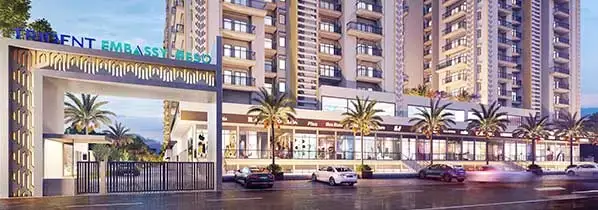
How Location Can Make or Break Your Real Estate Investment
You walk into a stunning apartment,
marbled floors gleaming under the sunlight, with views that take your breath
away. It ticks all the boxes—luxurious interiors, cutting-edge architecture,
and a price that seems fair for its grandeur. Yet, a few months after
investing, you're left frustrated with low rental yields, unexpected traffic
snarls, lack of essential amenities, and a value appreciation rate that's
crawling at a snail’s pace. Where did things go wrong?
More often than not, it’s not the
development that failed you—it’s the location.
When it comes to real estate, the adage
“location, location, location” isn’t just a catchphrase; it’s a golden rule.
Whether you’re an individual investor looking for residential properties or a
developer aiming for high returns, where you choose to invest is crucial. A bad
location can turn a seemingly perfect property into a financial nightmare. On
the other hand, investing in a prime or promising location can generate
exponential returns over time.
This blog dives deep into how location plays a defining role in the success or failure of real estate investments and why choosing the right one is more than just an informed guess—it's a science.
The Pillars of a Good Real Estate Location
The success of a real estate investment
is intricately linked to the location's characteristics. Let’s break down some
of the factors that can elevate a location from "meh" to magnificent.
1. Proximity to Infrastructure and Connectivity
In India, the proximity to transportation
hubs like metro stations, highways, and airports is crucial. Locations like
Gurugram and Navi Mumbai have seen skyrocketing property prices and rental
demand, partly due to their excellent connectivity to commercial hubs.
Key infrastructure projects such as the
Delhi-Mumbai Industrial Corridor (DMIC) or the expansion of metro lines can
drastically influence property values. In fact, areas connected by metro lines
in cities like Bengaluru and Hyderabad have seen property prices rise by up to
10-15% over five years. Access to public transport reduces commute times, which
appeals to both homebuyers and tenants. For instance, an apartment located 30
minutes away from a business district via metro is more attractive than a cheaper
option that requires two hours of travel.
2. Social Amenities and Livability
When scouting for a good location, don’t
forget to check the social amenities: schools, hospitals, parks, and shopping
centers. These facilities don't just enhance the quality of life but also boost
the property's attractiveness. A well-established school or healthcare facility
within a few kilometers increases the area’s value exponentially.
For instance, localities like Whitefield
in Bengaluru or Parel in Mumbai gained popularity due to their proximity to
well-known educational institutions and healthcare facilities. With more
families moving to such areas, the demand for properties—and hence their
values—soared.
3. Economic Activity and Employment Opportunities
Job availability plays a significant role
in determining a location’s appeal. Areas near major business hubs, tech parks,
and industrial zones tend to appreciate faster. For example, Gurugram, once a
sleepy town, transformed into a real estate powerhouse after multinational
corporations set up shop in its cyber hubs.
If you’re investing in residential real
estate, it’s wise to consider how close the property is to commercial
establishments and business parks. Even tier-2 cities like Pune and Hyderabad
have seen substantial growth because of their thriving IT sectors, leading to
higher demand for housing.
4. Future Development Potential
Sometimes, the best locations are those
that are currently underdeveloped but have significant potential for growth.
Smart investors often look at government plans for infrastructure development,
such as the establishment of new airports, SEZs (Special Economic Zones), or
metro lines. These developments can turn what seems like a barren or
unpromising area into a booming real estate market.
Take the example of Noida’s Sector 150. A few years ago, this area was largely ignored. But once the Noida International Airport was announced, the region became a hotspot for real estate investors. Properties in the area are now appreciating rapidly, and those who bought in the early stages are enjoying significant returns.
The Future of Real Estate in Emerging Locations
With Indian cities expanding rapidly, new
locations are continually emerging as prime investment hubs. Tier-2 cities like
Panchkula, Chandigarh, Ahmedabad, Kochi,
and Indore are gaining attention due to improving infrastructure and lower
entry costs. Moreover, the Smart Cities Mission is poised to transform smaller
cities with better urban planning and technology-driven development.
For investors, these cities represent a golden opportunity to buy into areas before they hit their prime, maximizing long-term returns. Identifying such emerging locations requires a blend of market research, trend analysis, and an understanding of future infrastructure projects.
Conclusion: The Compass to a Successful
Investment
Choosing the right location can be the
difference between a lucrative investment and a money pit. It’s about aligning
your investment goals with the realities of the location: its connectivity,
infrastructure, economic growth, and future development. In India, where
urbanization is accelerating, and infrastructural developments are reshaping
the property landscape, being location-savvy is more important than ever.
So, before you fall in love with that
swanky new apartment or plot of land, ask yourself: is this location set up for
success?
Because in real estate, the address is
everything.









